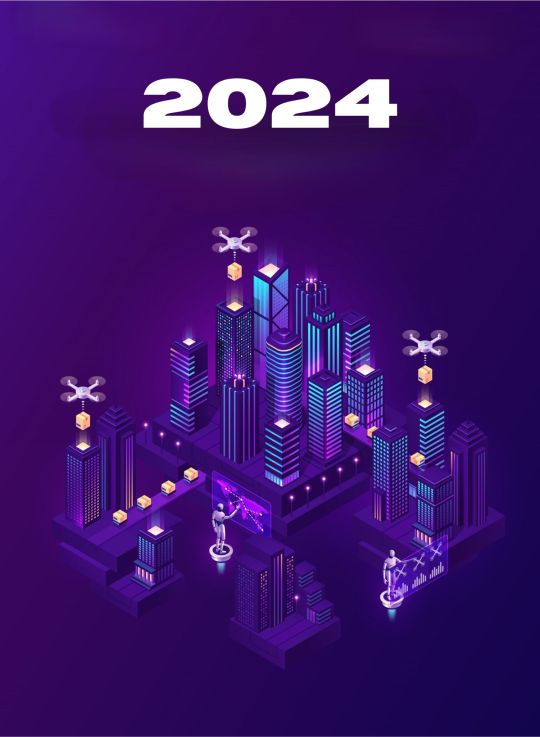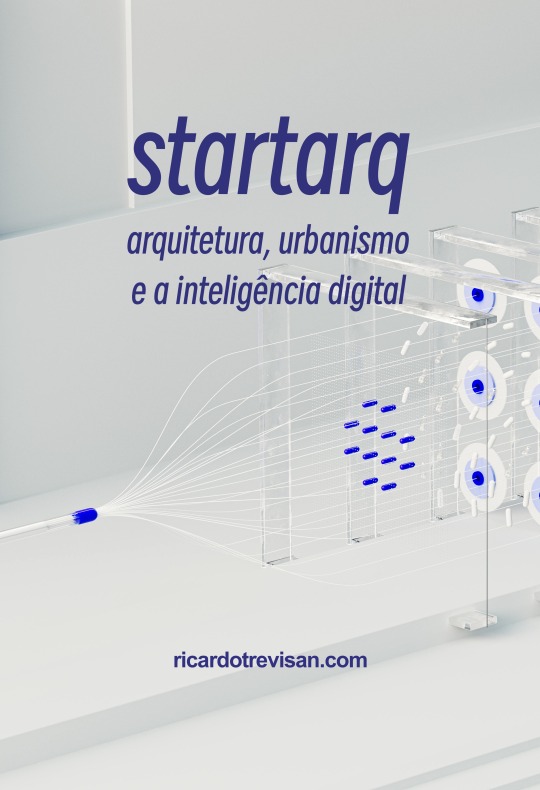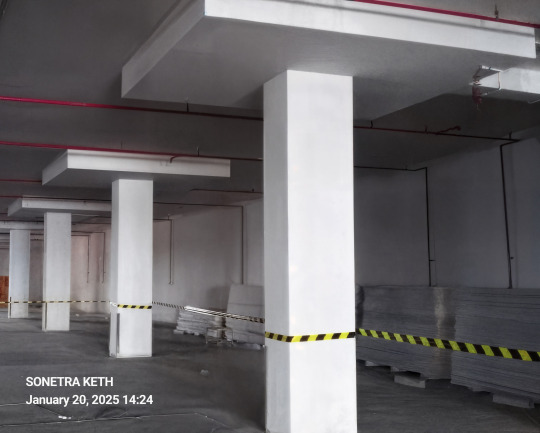#AI in BIM
Explore tagged Tumblr posts
Text
AI in BIM: Paving the Way for Smarter Construction Projects

The construction industry, traditionally known for manual labor and on-site work, is undergoing a digital revolution. Among the transformative technologies leading this shift is Building Information Modeling (BIM), a process that has redefined project planning, design, and management. Now, with the integration of Artificial Intelligence (AI), BIM is entering a new phase, poised to reshape the future of construction with unprecedented levels of efficiency, accuracy, and innovation.
In this blog post, we'll explore how AI-driven BIM modeling is shaping the future of construction, its impact on various phases of project development, and what it means for stakeholders across the industry.
1. Enhanced Design Automation
AI’s role in BIM is revolutionizing how architects and engineers design buildings. Traditionally, designers had to manually create complex 3D models, but AI-driven BIM modeling automates many aspects of the design process. AI algorithms can generate designs based on preset parameters, making it easier to explore multiple design options and scenarios.
Through generative design, a subfield of AI, engineers can input constraints like materials, budgets, and environmental considerations into BIM software, and the AI will generate a wide range of optimized design solutions. This process saves time and helps identify the most efficient, sustainable, and cost-effective design options for construction projects.
2. AI-Enhanced Collaboration and Coordination
Construction projects involve numerous stakeholders: architects, engineers, contractors, and owners. Effective collaboration between these parties is critical to the success of any project. AI-driven BIM enhances collaboration by facilitating seamless integration and real-time coordination.
With AI, BIM platforms can analyze and predict potential clashes between different disciplines before construction even begins. For instance, AI algorithms can cross-check architectural designs against structural engineering models to ensure that everything fits together without conflicts. This early clash detection helps avoid costly delays and revisions during the construction phase.
Moreover, AI-powered BIM systems can send automated updates and alerts to all team members, ensuring that everyone is on the same page. Real-time feedback loops also enable quicker decision-making, keeping the project on track and under budget.
3. Risk Mitigation and Safety Improvement
Safety is a major concern in construction, and AI-driven BIM modeling is playing a key role in improving on-site safety. AI can analyze historical data from previous projects to predict potential risks in current and future construction sites.
For example, AI algorithms can review data related to worker behavior, equipment usage, and environmental conditions to identify patterns that could lead to accidents. By integrating this data with BIM models, AI can create simulations that highlight potential hazards before they occur.
In addition, AI-powered BIM can help in scheduling construction tasks more effectively. By analyzing timelines and construction site conditions, AI can recommend the safest sequence of operations, reducing the risk of accidents and improving overall safety outcomes.
4. Predictive Maintenance and Facility Management
Beyond the construction phase, AI-driven BIM plays an essential role in facility management and predictive maintenance. Once a building is operational, AI can continuously monitor the structure using sensors and IoT devices integrated with the BIM model.
AI can predict when maintenance is required by analyzing data related to the wear and tear of building materials, mechanical systems, and environmental factors like humidity and temperature. This predictive maintenance capability helps facility managers address issues before they become costly repairs, extending the lifespan of the building and improving its overall efficiency.
Additionally, AI can analyze energy usage patterns within a building and suggest optimizations for reducing energy consumption. This not only results in significant cost savings but also supports sustainable construction practices by minimizing the building's carbon footprint.
5. Optimized Construction Scheduling and Resource Management
Time is a critical factor in construction projects, and delays can lead to budget overruns. AI-driven BIM modeling significantly enhances the construction scheduling process by automating the development of construction timelines based on the analysis of previous projects, real-time data, and available resources.
AI algorithms can also optimize the allocation of materials and labor. By analyzing data related to material usage, workforce availability, and equipment requirements, AI can recommend the best way to schedule deliveries, deploy workers, and utilize equipment on-site. This level of precision reduces waste, minimizes downtime, and keeps the project on schedule.
Furthermore, AI can continuously update the construction schedule as new data becomes available, ensuring that the project adapts to changes in real-time. Whether it's weather disruptions, supply chain issues, or other unforeseen events, AI-driven BIM systems can help adjust schedules and resource allocations to keep the project moving forward.
6. Sustainability and Environmental Impact Reduction
Sustainability is increasingly a priority for the construction industry. AI-driven BIM modeling can significantly contribute to more sustainable construction practices. By integrating AI, BIM can simulate various design and construction scenarios to determine their environmental impact, from energy consumption to the carbon footprint.
AI can analyze building materials, design features, and construction methods to identify the most eco-friendly options. For example, AI can suggest materials with lower environmental impact, optimize building orientation for energy efficiency, and recommend sustainable construction practices.
In the long run, AI-powered BIM helps the industry achieve sustainability goals by designing and constructing buildings that are more energy-efficient, use fewer resources, and have lower operational costs.
7. Real-Time Data Analytics and Informed Decision-Making
One of the most powerful aspects of AI-driven BIM is the ability to collect and analyze vast amounts of data in real time. From design inception to post-construction, AI can process data from various sources—such as sensors, cameras, and IoT devices—to provide actionable insights at every stage of the project lifecycle.
These insights enable construction managers and project stakeholders to make more informed decisions. For example, AI can analyze labor productivity data to optimize workforce deployment or assess material supply chain data to minimize procurement delays.
By leveraging real-time data, AI-powered BIM systems provide valuable foresight into potential challenges, enabling proactive decision-making that keeps projects on track and within budget.
8. AI and the Future of Smart Cities
As the world moves toward the development of smart cities, AI-driven BIM modeling will be a crucial element in their realization. Smart cities require interconnected infrastructure, seamless energy management, and optimized transportation systems—all of which can be modeled, simulated, and optimized through AI-powered BIM platforms.
AI-driven BIM can model entire city infrastructures, enabling urban planners to simulate and test different urban design scenarios. AI can assess the impact of various factors like traffic flow, energy consumption, and environmental conditions, enabling smarter, more sustainable urban planning decisions.
As smart cities continue to evolve, AI-driven BIM will play an integral role in shaping their future by creating data-rich models that optimize urban infrastructure for efficiency, sustainability, and resilience.
Conclusion
AI-driven BIM modeling is more than just a technological innovation—it is the future of the construction industry. From automating design processes and enhancing collaboration to improving safety, sustainability, and facility management, AI is reshaping how construction projects are conceived, executed, and maintained. By leveraging AI in BIM, construction professionals can expect faster project delivery, reduced costs, enhanced safety, and a more sustainable built environment.
As AI technologies continue to evolve, the possibilities for BIM-driven construction are endless. The industry is on the cusp of a future where AI will not only enhance existing processes but also enable entirely new ways of building, managing, and living in the spaces of tomorrow.
#AI in BIM#BIM Technology#AI#Construction Efficiency#Design#Construction Projects#Automation#Innovation#AI-Driven BIM Modeling#Transforming Construction#Smarter Construction#planning#design#management#Artificial Intelligence (AI)#Building Information Modeling (BIM)
0 notes
Text
AI-Powered Scan to BIM: Revolutionizing Construction Workflows 🚀

Transforming point cloud data into precise BIM models just got faster and smarter. AI-driven scan to BIM workflows streamline traditional processes, delivering high-precision outputs with less effort. This service tackles manual processing pain points, optimizes costs, and paves the way for sustainable, efficient construction—making it a game-changer for modern projects.
Why Choose AI-Driven Scan to BIM? 🌟
Faster Model Generation: Automated workflows cut project timelines, boosting efficiency.
High Precision & Reliability: Advanced data cleaning and object recognition ensure 95% first-time-right deliverables.
Cost Optimization: Reduced manual effort and labor costs make projects more affordable.
Smart Features: Instantly identifies walls, doors, and MEP systems for consistent model quality.
Future-Ready Innovation: Integrates AI-powered clash detection and prefabrication workflows for smarter, sustainable buildings.
Enhanced Accuracy: Removes noise and delivers reliable BIM outputs for commercial projects.
Digital Overlays: Futuristic construction site tools visualize progress in real time.
Ready to Build Smarter? 🏗️
Discover how AI-driven scan to BIM can transform your next project. Visit Tesla CAD UK to explore the future of construction today!
0 notes
Text










Saturday 5-24-2025
#cops#police#law enforcement#police officer#bodycam#bodycam footage#police bodycam#bim bam bodycam#ai cops#ai police
1 note
·
View note
Text

openBIM® by Sonetra KETH
openBIM® is a collaborative approach and an ecosystem of open standards, protocols, and workflows that enable interoperability across different BIM software platforms, stakeholders, and disciplines in the Architecture, Engineering, and Construction (AEC) industry.
openBIM® represents an industry-wide movement towards interoperability and open standards that facilitate collaborative, data-rich BIM workflows across diverse software platforms and stakeholders, ultimately fostering a more integrated, flexible, and sustainable built environment ecosystem.
Core Principles of openBIM®
Interoperability: Seamless exchange of BIM data without proprietary restrictions.
Open Standards: Relying on internationally recognized, non-proprietary standards to facilitate data consistency and collaboration.
Open Data Exchange: Promoting a data-centric approach where model information can be shared, interpreted, and used across various tools.
Collaborative Ecosystem: Enabling multiple stakeholders using different applications to work collectively on a project.
Key Components of openBIM®
Standards and Protocols
Industry Foundation Classes (IFC): The core openBIM schema developed by buildingSMART® for rich, schema-based exchange of geometric and semantic data.
bSDD (buildingSMART Data Dictionary): A comprehensive repository of standardized data definitions to ensure semantic consistency.
CityGML, IFC-SPF: Additional standards for GIS, infrastructure, and other data formats.
IFC, BCF (BIM Collaboration Format): For model data exchange and issue tracking.
Tools and Software
Various BIM applications supporting openBIM standards, enabling import/export, viewing, validation, and collaboration while maintaining data integrity.
The interoperability is made possible through software certifications and compatibility testing, often coordinated by buildingSMART®.
Workflow & Data Management
Emphasizes a model-centric approach, where the central repository is an IFC model that can be accessed, modified, and referenced by multiple applications.
Promotes open data exchange rather than proprietary formats, reducing vendor lock-in and fostering innovation.
Advantages of openBIM®
Vendor Neutrality: No single vendor controls the data exchange standards.
Flexibility & Compatibility: Enables collaboration across various platforms (Revit, ArchiCAD, Vectorworks, Tekla, etc.).
Long-term Data Sustainability: Ensures that project data remains usable and understandable over time.
Enhanced Collaboration: Stakeholders can work concurrently, review, issue comments, and coordinate effectively.
RMIT University Vietnam (2015)
youtube
buildingSMART International Technical Director Léon van Berlo who discusses the openBIM workflow
Sonetra KETH (កេត សុនេត្រា) •Architectural Manager, Project Manager, BIM Director •建築師經理, 專案經理, BIM總監 •Giám đốc kiến trúc, Giám đốc dựán, Giám đốc BIM •RMIT University Vietnam + Institute of Technology of Cambodia
#Sonetra Keth#Architectural Manager#Architectural Design Manager#BIM Director#BIM Manager#BIM Coordinator#Project Manager#RMIT University Vietnam#Real Estate Development#Construction Industry#Building Information Modelling#BIM#AI#Artificial Intelligence#6th Annual BIM Summit#Technology#VDC#Virtual Design#IoT#Khmer BIM#Machine Learning#C4R#Collaboration for Revit#NETRA#netra#នេត្រា#កេត សុនេត្រា#crossorigin=“anonymous”></script>#<meta name=“google-adsense-account” content=“ca-pub-9430617320114361”>#<script async src=“https://pagead2.googlesyndication.com/pagead/js/adsbygoogle.js?client=ca-pub-9430617320114361”
1 note
·
View note
Text

Typical Detail: RC Slab Drop Panel 典型细节: 钢筋混凝土板 Drop Panel by Sonetra KETH

DROP PANELS are reinforced concrete extensions around the top of shear walls, columns, or heavily loaded areas. They are critical elements in seismic and load-resistant structural design. Slab drop panels are thickened areas around columns in flat slab construction, increasing shear strength and enabling the slab to support greater loads. This feature is typical of flat slab systems, which are two-way reinforced structures.
Drop Panels are needed because:
Shear and Moment Resistance: They enhance the capacity of vertical structural elements (shear walls or columns) to resist bending moments and shear forces, especially at the critical junctions (e.g., wall-column interfaces).
Reduce Stress Concentrations: Drop panels distribute concentrated shear and axial loads more evenly into the foundation or diaphragm, preventing stress concentrations and potential structural failure.
Increase Structural Rigidity and Stability: They improve the overall stiffness and robustness where high load or seismic forces are expected, especially in high-rise or seismic zones.

Typical Detail: Column-Slab Section Views
典型细节: 钢筋混凝土柱和板 剖面图 by Sonetra KETH
Much engineering judgment is required to reach a sound conclusion on the allowable movements that can be safely tolerated in a tall building. Several factors need to be taken into account. These are:
Type of framing employed for the building
Magnitude of total as well as differential movement
The rate at which the predicted movement takes place
Type of movement, whether the deformation of the soil causes tilting or vertical displacement of the building
Every city has its own particular characteristics regarding the design and construction of foundations for tall buildings, which are characterized by the local geology and groundwater conditions. Their choice for a specific project is primarily influenced by economic and soil conditions, and even under identical conditions, it can vary in different geographical locations.
•Sonetra KETH (កេត សុនេត្រា) •Project Manager/Architectural Manager/BIM Director •RMIT University Vietnam + Institute of Technology of Cambodia ------------------------------------------------------------ 建筑师经理、专案经理、BIM总监 Giám đốc Kiến Trúc, Giám đốc Dựán, Giám đốc BIM
#Sonetra Keth#Architectural Manager#Architectural Design Manager#BIM Director#BIM Manager#BIM Coordinator#Project Manager#RMIT University Vietnam#Real Estate Development#Construction Industry#Building Information Modelling#BIM#AI#Artificial Intelligence#6th Annual BIM Summit#Technology#VDC#Virtual Design#IoT#Khmer BIM#C4R#Collaboration for Revit#NETRA#netra#នេត្រា#កេត សុនេត្រា#crossorigin=“anonymous”></script>#<meta name=“google-adsense-account” content=“ca-pub-9430617320114361”>#<script async src=“https://pagead2.googlesyndication.com/pagead/js/adsbygoogle.js?client=ca-pub-9430617320114361”#https://amzn.to/3Z4qc10
0 notes
Text
Artificial Intelligence is profoundly reshaping the Building Information Modeling (BIM) industry, driving innovation, efficiency, and intelligent decision-making across the architecture, engineering, and construction (AEC) sectors. BIM, as a digital representation of physical and functional characteristics of a facility, has long served as a vital tool in modern construction processes. With the integration of AI, BIM systems are becoming smarter, more predictive, and increasingly automated.
0 notes
Text
AI in Building Information Modeling (BIM): Revolutionizing Construction

Introduction
Building Information Modeling (BIM) has become a crucial tool in today’s construction industry, transforming the way buildings are planned, designed, constructed, and managed. By generating a detailed digital representation of a building's physical and functional elements, BIM facilitates improved collaboration among architects, engineers, contractors, and other project team members.
But there’s a new player transforming BIM even further—Artificial Intelligence (AI). The integration of AI into BIM is reimagining construction processes by automating tasks, improving accuracy, and making data-informed decisions at every stage of a project. This post dives into how AI enhances BIM and how these advancements are reshaping the construction industry as we know it.
Whether you're a construction professional, real estate developer, or architect, this blog will demonstrate why combining AI and BIM is a game changer for your projects.
What is Building Information Modeling (BIM)?
At its core, BIM is a digital tool used to create and manage information about a building throughout its entire lifecycle. From designing in 3D to capturing data about materials, energy efficiency, and structural integrity, BIM encompasses a wide range of functionalities.
Key Features of BIM:
3D Modeling: Digital 3D representations that are easy to visualize and modify.
Data-Rich Environment: Beyond design, BIM integrates detailed data about energy efficiency, materials used, and systems like plumbing and HVAC.
Collaboration Tools: Centralized communication among architects, engineers, contractors, and facility managers, ensuring teams work cohesively.
Why BIM is Essential for Modern Construction
BIM eliminates inefficiencies by improving design accuracy, enabling better communication, and reducing construction costs through informed decision-making. Simply put, BIM is no longer optional for complex construction projects; it’s a necessity.
How AI Enhances BIM
AI is amplifying BIM’s potential by introducing automation, predictive capabilities, and real-time data integration that were previously unimaginable. Here’s how AI is changing the BIM landscape:
1. Automated Design Optimization
AI algorithms can suggest optimized layouts, energy-efficient designs, and ideal material usage. For example, AI can create designs accommodating sunlight, airflow, and occupant patterns to ensure better energy performance.
2. Predictive Analytics for Better Decision-Making
AI utilizes past data and real-time information to predict design results. For instance, before construction kicks off, AI-driven algorithms can model how a building will perform in different scenarios, allowing potential problems to be identified early on.
3. Smart Conflict Detection
One of the most critical roles of AI in BIM is identifying clashes between systems like plumbing, electrical, and HVAC during the design phase. These early interventions save significant time and money during construction.
4. Real-Time Data Integration
Using IoT devices, drones, and sensors, AI integrates real-time updates into BIM. Want to know the progress of your construction site? AI-enhanced BIM can provide dynamic models that reflect the current state of the project.
Benefits of AI in BIM
AI’s integration into BIM brings forth a plethora of advantages. Here are some key benefits that are transforming the way construction is being executed:
Improved Accuracy
AI significantly reduces errors by detecting inconsistencies that human designers may overlook, enhancing the precision of BIM models.
Time Savings
AI streamlines repetitive tasks like clash detection and data analysis, enabling professionals to concentrate on more impactful work and helping to speed up project timelines.
Cost Reduction
By spotting design flaws early, AI helps avoid expensive changes during construction, saving both time and resources.
Enhanced Collaboration
AI-powered BIM fosters smoother collaboration among teams by offering real-time updates, enabling better coordination between stakeholders.
Sustainability
AI can recommend sustainable designs that reduce environmental impact. For example, it can calculate material usage and waste reduction techniques, ensuring greener construction practices.
Real-World Applications of AI in BIM
AI in BIM isn’t just theoretical; it’s actively revolutionizing construction projects worldwide. Here are some standout examples:
Case Study 1: AI-Driven Energy Efficiency
An AI-powered BIM tool was employed for a large office complex in the UK. The system optimized the building’s spatial layout, aiming for maximum daylight entry and minimal energy consumption. The result? A 25% energy efficiency improvement over conventional designs.
Case Study 2: Predicting Risks in a High-Rise Project
A large real estate developer in Dubai used predictive AI models to simulate potential risks in a high-rise construction project. Early detection of structural issues saved the company millions in potential delays and re-works.
Case Study 3: Reducing Clashes During Stadium Construction
For a sports stadium in the US, AI-assisted clash detection in BIM found over 200 design conflicts before construction began. Fixing these issues upfront led to cost savings of nearly $5 million.
These examples illustrate how AI-powered BIM solutions are reshaping construction, ensuring projects are delivered on time, within budget, and with minimal disruptions.
Challenges in Integrating AI with BIM
While the benefits of AI-enhanced BIM are undeniable, adoption still faces challenges:
Data Complexity: AI algorithms need high-quality, structured data to function effectively, which isn’t always available.
Resistance to Change: High initial implementation costs and lack of AI expertise often make companies hesitant.
Integration Issues: Many businesses struggle with integrating AI solutions into existing BIM software and workflows.
Skills Gap: Proper integration requires training teams to understand and use advanced AI tools effectively.
Overcoming these challenges is key to enabling the widespread use of AI and fully unlocking its potential in the construction industry.
The Future of AI and BIM in Construction
With rapid advancements in technology, the future of AI and BIM looks promising. Emerging trends include:
Continual Learning
AI systems are becoming better at learning from previous projects, improving design suggestions and outcomes over time.
Advanced AI for Autonomous Construction
Imagine construction machines using AI-driven BIM models to operate autonomously, laying bricks or installing systems with precision.
Building Smarter Cities
AI-enhanced BIM will play a major role in sustainable urban development, enabling efficient energy use, smart building management, and low-carbon transportation solutions.
Why AI in BIM is the Future of Construction
AI-driven BIM isn’t just a technological advancement; it’s an industry revolution. From automated precision to reduced costs and enhanced collaboration, this powerful combination is paving the way for smarter, faster, and more sustainable construction.
For construction professionals, architects, and real estate developers, adapting to this AI-enhanced workflow isn’t merely an option; it’s the key to staying competitive and improving project outcomes in a rapidly evolving industry.
Are you ready to elevate your projects with AI BIM solutions? Start exploring advanced BIM software today and take the first step toward a smarter construction future.
0 notes
Text
Top BIM Software Tools for AEC Professionals: A Complete Guide

View On WordPress
#3D modeling#ai#architecture#artificial intelligence#BIM software#building construction#Building Information Management#business#Cloud Computing#construction#construction industry#construction innovation#Information Security#infrastructure#iot
0 notes
Text
Wrapping Up 2024: BIM Trends that Revolutionized the AEC Industry

Building Information Modeling (BIM) has fundamentally transformed the architecture, engineering, and construction (AEC) industry, making processes more efficient and collaborative. By integrating advanced technology, BIM enables stakeholders to design, visualize, and execute projects with precision. Leveraging BIM can significantly boost the return on investment (ROI) for projects; collaborative BIM solutions, in particular, have been shown to push ROI into the higher brackets, often exceeding 50%.
Over the years, BIM has simplified complex workflows, enabling seamless collaboration between architects, engineers, contractors, and project owners. As technology continues to evolve, the role of BIM in the AEC industry is expanding, with new trends having emerged that promises to further enhance its potential.
The Top BIM Trends of 2024
The evolution of BIM is relentless, having introduced innovative tools and methodologies that redefine how the AEC industry operates. Here are some of the top trends that shaped BIM in 2024:
1. 3D Printing Integration with BIM
3D printing has revolutionized manufacturing, and its integration with BIM is taking construction to new heights. By transforming digital models into tangible prototypes, 3D printing enables teams to visualize building elements in physical form. This helps stakeholders assess the functionality, aesthetics, and structural integrity of designs before actual construction begins.
Using thin layers of material, 3D printers can produce intricate components with minimal waste, making the process eco-friendly. When combined with BIM workflows, 3D printing allows for rapid prototyping and effective communication among team members, leading to streamlined project execution.
2. Augmented and Virtual Reality (AR/VR)
AR and VR are becoming indispensable tools in the BIM toolkit, enhancing visualization and collaboration. These technologies provide immersive experiences, enabling stakeholders to explore large-scale 3D models in real time. With AR/VR, a top BIM company can conduct virtual walkthroughs, identify design flaws, and present interactive models to clients, fostering better decision-making.
AR also supports on-site tasks like clash detection and remote management, helping project teams resolve issues swiftly. As AR/VR technology advances, its application within BIM processes will become even more prevalent, bridging the gap between design and construction.
3. Cloud-Based BIM Solutions
Cloud computing is transforming how BIM data is stored, shared, and accessed. Cloud-based BIM platforms empower teams to collaborate seamlessly by providing real-time access to design data from any location. These solutions enhance communication, reduce miscommunication, and ensure all stakeholders are aligned throughout the project lifecycle.
Mobile applications further enhance this collaboration by enabling instant updates, reporting, and data sharing, thus minimizing delays and boosting efficiency. The adoption of cloud frameworks ensures projects are completed on time and within budget.
4. Internet of Things (IoT) Integration
The Internet of Things (IoT) is redefining how BIM interacts with real-world data. IoT devices can collect real-time information from construction sites, feeding it back into BIM models for analysis and optimization. This integration enables prefabrication workflows, predictive maintenance, and smarter design decisions.
For instance, IoT sensors can monitor energy usage, structural integrity, and environmental conditions, allowing BIM models to adapt dynamically. This data-driven approach ensures that construction projects are not only efficient but also sustainable.
5. Drones for Data Collection
Drones are becoming an essential tool in the AEC industry, particularly for data collection and site monitoring. Equipped with high-resolution cameras and sensors, drones can survey large areas quickly and safely, capturing precise data for BIM modeling. This information is invaluable for refining designs and ensuring projects stay on track.
Additionally, drones reduce risks associated with manual surveying, especially in hazardous environments. Their ability to provide aerial views and real-time progress updates makes them a game-changer for construction management.
6. Improved Sustainability
Sustainability in construction involves addressing energy efficiency, green architecture, and eco-friendly processes. BIM plays a pivotal role in evaluating project models for environmental impact, considering factors such as CO2 emissions, energy consumption, and compatibility with renewable energy systems like solar panels or wind turbines.
Energy modeling within BIM enables comprehensive analysis of future building operations, ensuring they align with sustainability goals. As environmental concerns grow, many governments have mandated the use of “green” construction practices. BIM not only simplifies this transition but also ensures compliance with regulations, making sustainability an integral part of the construction lifecycle.
7. Artificial Intelligence (AI)
Artificial intelligence is revolutionizing how data is analyzed and utilized within BIM processes. AI enhances BIM's capacity to process vast datasets, providing actionable insights for better decision-making. From suggesting optimal object placement to predicting delays, AI's predictive capabilities improve efficiency across all stages of construction.
Moreover, AI-powered tools can detect irregularities, enhance quality control, and propose cost-effective or eco-friendly alternatives. By incorporating AI, BIM ensures smarter, faster, and more reliable construction workflows, catering to goals such as cost savings, sustainability, and precision.
8. Laser Scanning
Laser scanning technology, when integrated with BIM services, elevates accuracy in capturing on-site conditions. Using point-cloud data, laser scanners convert real-world measurements into detailed BIM models. This process, known as “Scan to BIM,” bridges the gap between physical environments and digital representations.
This technology minimizes errors caused by manual data entry, accelerates project monitoring, and reduces reliance on traditional survey methods. As scanner performance improves, projects benefit from faster completion times, optimized costs, and more precise construction outcomes.
9. Modular Construction and Prefabrication
BIM complements modular construction and prefabrication by improving design accuracy and reducing errors. Prefabrication involves manufacturing construction elements off-site and assembling them on-site, while modular construction focuses on creating standardized modules that can be replicated with minimal modifications.
Examples of modular construction include pre-assembled bathrooms, dormitories, or façade components. BIM’s precise modeling ensures seamless integration of these elements, fostering safer, more cost-efficient construction with reduced risks. By promoting standardization, BIM empowers teams to deliver consistent, high-quality results in less time.
10. Digital Twins
The concept of a digital twin lies at the core of BIM. A digital twin is a virtual replica of a physical structure, enabling teams to simulate, predict, and optimize performance even before construction begins.
Digital twins enhance visualization for stakeholders, improve decision-making, and reduce the need for rework. By simulating real-world scenarios, digital twins provide valuable insights into a building’s future operations, maintenance, and performance, making them indispensable for modern construction projects.
11. Interoperability
Interoperability has been a long-standing challenge in the BIM landscape, primarily due to proprietary file formats limiting seamless data exchange. While BIM promotes collaborative workflows, the lack of standardized formats often hinders efficient communication between platforms.
Conclusion: Unlocking the Full Potential of BIM in AEC
The transformative power of Building Information Modeling (BIM) was fundamental in shaping the AEC industry in 2024. From enhanced collaboration to the integration of cutting-edge technologies such as AI, laser scanning, and digital twins, BIM continues to redefine how projects are designed, executed, and managed.
As BIM adoption becomes more widespread—bolstered by governmental mandates and the need for sustainable, efficient construction practices—its role as a cornerstone of modern project management grows increasingly undeniable. By enabling seamless interoperability, reducing redundancies, and fostering innovation, BIM is not just a tool but a strategy for achieving unparalleled efficiency and precision.
The trends outlined above highlight how BIM has evolved to meet the challenges of an ever-changing industry this year. For AEC professionals, embracing BIM is no longer an option but a necessity to stay competitive and deliver value!
0 notes
Text
プラットフォーム時代の建設業:生き残るための3つの戦略
はじめに 建設業界は現在、未曾有の変革期に突入しています。デジタル技術の急速な進展、人手不足の深刻化、新型コロナウイルス感染症による働き方の変化など、複数の要因が重なり合い、従来のビジネスモデルでは対応が難しくなっています。 特に注目すべきは、「プラットフォーム」を活用した新しいビジネスモデルの登場です。本記事では、建設業界におけるプラットフォームの重要性と、それを最大限に活用して生き残るための3つの戦略を詳しく解説します。 プラットフォームとは何か? まず、「プラットフォーム」の概念を明確にしておきましょう。ビジネスにおけるプラットフォームとは、複数の利用者(企業や個人)が参加し、相互に価値を創出する場を指します。具体的には、発注者、元請け、下請け、資材メーカー、設計事務所など、建設業界の多様なプレイヤーが一つのシステム上で連携し、情報共有や取引を行う仕組みです。 プラットフ…
0 notes
Text
TimberTec is the future of construction AI
AI-driven tools like TimberTec are transforming construction estimation, providing the accuracy and efficiency today’s builders and carpenters need.
1 note
·
View note
Text
Startarq: atualização disponível
Conforme prometido, o livro Startarq receberá atualizações sempre que possível. O livro, que trata da nova inteligência digital aplicada ao desenvolvimento de projetos, acaba de receber sua primeira atualização ainda no mesmo ano de seu lançamento (2024). Foi incluído um capítulo sobre BIM (Building Information Modeling) nesta primeira atualização do título. Este livro foi lançado em formato…

View On WordPress
#administração escritório de arquitetura#AI#arquitetura e urbanismo#atualização#atualização gratuita#atualoização#aU#bibliografia#BIM#blog do Trevisan#Building Information Modeling#business model#cinco domínios#cliente#como desenvolver#como migrar#como mudar#competição#conceito#dados#definição#digital twin#digital twins#escritório de arquitetura#GA#gêmeo digital#gêmeos digitais#gestão#Gestão Arquitetônica#gestão do escritório arquitetura
0 notes
Text
The Digital Shift | How Tech is Redefining Industrial Estimating Service
Introduction: The Role of Technology in Modern Industrial Estimating The industrial sector, once reliant on traditional methods of estimating project costs, has entered a new era where technology is reshaping how projects are planned, managed, and executed. In particular, industrial estimating services are benefiting from the integration of cutting-edge technology that enhances accuracy, efficiency, and overall project outcomes. As industries adopt advanced digital tools, the way cost estimates are generated and managed has evolved significantly, streamlining workflows, improving decision-making, and reducing the risks associated with manual errors and outdated practices.
The Shift from Manual Estimating to Digital Tools For many years, industrial estimating was a manual process that involved spreadsheets, paper-based plans, and extensive calculations. While these methods worked, they were time-consuming and prone to human error. Today, however, digital tools such as Building Information Modeling (BIM), 3D modeling, cloud-based estimating software, and artificial intelligence (AI) are transforming how industrial projects are estimated.
These technologies provide estimators with more powerful, accurate, and efficient means of calculating project costs. For instance, BIM allows for the creation of detailed, 3D models of a project, enabling estimators to visualize the design and identify potential issues before construction begins. This can lead to more accurate estimates and fewer surprises during the construction phase.
Building Information Modeling (BIM): Revolutionizing the Estimating Process BIM has revolutionized the way construction projects are designed and estimated. In industrial projects, BIM provides a detailed, virtual representation of the entire project, including every structural element, material, and system. This digital model allows estimators to see the project in its entirety and calculate accurate costs based on real-time data.
BIM helps estimators identify potential conflicts or inefficiencies in the design early on, reducing the likelihood of costly mistakes. For example, by modeling the mechanical, electrical, and plumbing systems in 3D, estimators can spot clashes or design issues that may lead to delays or cost overruns. This proactive approach allows estimators to adjust the design or budget before construction begins, improving the overall accuracy of the estimate.
Moreover, BIM allows for seamless collaboration between different stakeholders, such as architects, engineers, and contractors. Estimators can share the digital model with the entire project team, ensuring that everyone is on the same page and working toward the same goal.
Cloud-Based Estimating Software: Collaboration and Accessibility Cloud-based estimating software has become a game-changer for industrial estimating services. Unlike traditional desktop-based software, cloud-based solutions allow estimators to access project data from anywhere, at any time. This enhances collaboration between team members, contractors, and clients, as everyone can work from the same platform and update the estimate in real time.
Cloud-based software also provides the flexibility to store and organize vast amounts of project data, including cost breakdowns, material lists, and labor schedules. This data is securely stored in the cloud, ensuring that project details are accessible and up-to-date, even as changes occur during the project's lifecycle.
Additionally, cloud-based software can integrate with other project management tools, such as scheduling and procurement software. This enables estimators to track changes in real-time and adjust the cost estimates accordingly. For example, if there is a delay in material delivery, the estimator can update the estimate immediately, helping to keep the project on track and prevent cost overruns.
Artificial Intelligence and Machine Learning: Predictive Estimating Artificial intelligence (AI) and machine learning (ML) are increasingly being used in industrial estimating services to improve the accuracy and efficiency of cost predictions. By analyzing vast amounts of historical data, AI and ML algorithms can identify patterns and trends that human estimators may overlook.
For example, AI can help predict material costs based on historical pricing data, accounting for factors like inflation and market fluctuations. This allows estimators to generate more accurate cost projections, even in volatile markets. AI can also help identify potential risks, such as supply chain disruptions, that may impact project timelines or costs.
Machine learning algorithms can continuously improve over time as they are exposed to more data, allowing estimators to refine their predictions and enhance their accuracy. The ability to leverage AI and ML in the estimating process helps reduce the likelihood of cost overruns and ensures that projects stay within budget.
Real-Time Data and Analytics: Making Informed Decisions In the past, estimators relied on static data, such as historical cost records and vendor quotes, to generate project estimates. However, with the rise of real-time data and analytics, industrial estimators now have access to more dynamic and up-to-date information that can impact their cost predictions.
For instance, cloud-based platforms and integrated project management systems allow estimators to access live pricing data, including current material costs, labor rates, and equipment rental fees. This real-time information helps estimators make more accurate predictions and adjust their estimates based on the latest market conditions.
Real-time data also allows estimators to track project progress more closely, monitoring any changes in scope or schedule that may affect costs. With up-to-date information at their fingertips, estimators can make informed decisions about how to adjust the budget or timeline, ensuring that the project stays on track and within budget.
Digital Integration with Supply Chain and Procurement Technology is also enhancing the way industrial estimating services interact with supply chain and procurement systems. With digital tools, estimators can easily integrate their cost estimates with procurement data, allowing them to track material availability, supplier lead times, and pricing fluctuations in real-time.
This integration helps prevent delays caused by supply chain disruptions and ensures that estimators can adjust their cost estimates as material prices fluctuate. For example, if a material becomes more expensive due to a global shortage, the estimator can immediately update the cost estimate and notify stakeholders of the potential impact on the project budget.
By streamlining the procurement process and connecting it directly to the estimating system, industrial estimators can avoid costly delays and keep the project moving forward.
The Future of Industrial Estimating: Virtual and Augmented Reality Looking ahead, virtual and augmented reality (VR and AR) are set to play an even more significant role in industrial estimating services. With VR and AR, estimators can create immersive, 3D simulations of the project, allowing them to visualize the construction process and identify potential issues before the project begins.
For example, by using AR glasses, estimators can overlay digital models onto the physical site, providing a real-time view of how the project will look once completed. This technology can help estimators identify issues related to space, design, or logistics that may not be apparent in traditional 2D drawings.
Incorporating VR and AR into the estimating process allows for better decision-making and a more accurate understanding of how the project will progress. As these technologies continue to evolve, industrial estimating services will become even more precise and efficient.
Conclusion: Embracing the Digital Shift for Better Industrial Estimating The digital shift is transforming the way industrial estimating services operate, bringing about improvements in accuracy, efficiency, and collaboration. From BIM and cloud-based software to AI and real-time data, technology is enabling industrial estimators to generate more precise cost estimates, reduce risks, and streamline the estimating process.
By embracing these digital tools, industrial estimating services can provide more reliable estimates that help projects stay within budget and on schedule. As technology continues to evolve, the potential for further improvements in estimating accuracy and efficiency is immense, and those who adopt these tools will be better equipped to navigate the complexities of modern industrial construction.
#digital shift#industrial estimating service#Building Information Modeling#BIM#cloud-based estimating#AI in estimating#machine learning#real-time data#predictive estimating#industrial construction#procurement integration#cost estimating software#augmented reality#virtual reality#project management software#cost forecasting#risk management#material costs#labor rates#supply chain disruptions#data analytics#construction delays#technology in construction#digital tools#cost prediction#construction efficiency#estimating accuracy#project collaboration#immersive technology#VR in construction
0 notes
Photo

Revit users, say hello to Forma! Forma by Autodesk is an AI-driven tool for generating and analyzing Building Information Modeling (BIM) projects. With the "Send to Revit" feature, users can easily convert the conceptual models into Revit elements, where they can further develop the design. This integration allows users to take a conceptual proposal developed in Forma and transform it into a detailed Revit project, complete with editable elements such as buildings, terrain, and other site features. Additionally, any changes made in Revit can be sent back to Forma for further analysis and validation, ensuring that the design remains aligned with the initial project goals and environmental considerations. This bidirectional workflow between Forma and Revit enhances the iterative design process, enabling architects to refine their projects more precisely and efficiently.
#AI#forma#revit#autodesk#tools#software#ArchitectsOfTomorrow#architects#simulation#sustainability#technologynews#BIM#designing#AIpowered#buildingdesign#urbanplanning#siteanalysis#newarchitects#futuretech#newcities
0 notes
Text

Typical Detail: RC Slab Drop Panel 典型细节: 钢筋混凝土板 Drop Panel by Sonetra KETH

Drop panels are reinforced concrete extensions around the top of shear walls, columns, or heavily loaded areas. They are critical elements in seismic and load-resistant structural design. Slab drop panels are thickened areas around columns in flat slab construction, increasing shear strength and enabling the slab to support greater loads. This feature is typical of flat slab systems, which are two-way reinforced structures.
Drop Panels are needed because:
Shear and Moment Resistance: They enhance the capacity of vertical structural elements (shear walls or columns) to resist bending moments and shear forces, especially at the critical junctions (e.g., wall-column interfaces).
Reduce Stress Concentrations: Drop panels distribute concentrated shear and axial loads more evenly into the foundation or diaphragm, preventing stress concentrations and potential structural failure.
Increase Structural Rigidity and Stability: They improve the overall stiffness and robustness where high load or seismic forces are expected, especially in high-rise or seismic zones.

Typical Detail: Column-Slab Section Views 典型细节: 钢筋混凝土柱和板 剖面图 by Sonetra KETH
Much engineering judgment is required to reach a sound conclusion on the allowable movements that can be safely tolerated in a tall building. Several factors need to be taken into account. These are:
Type of framing employed for the building
Magnitude of total as well as differential movement
The rate at which the predicted movement takes place
Type of movement, whether the deformation of the soil causes tilting or vertical displacement of the building
Every city has its own particular characteristics regarding the design and construction of foundations for tall buildings, which are characterized by the local geology and groundwater conditions. Their choice for a particular project is primarily influenced by economic and soil conditions, and even under identical conditions, it can vary in different geographical locations. In this section, a brief description of two types, namely, the pile and mat foundations, is given, highlighting their practical aspects.
Sonetra KETH (កេត សុនេត្រា) •Architectural Manager, Project Manager, BIM Director •建築師經理, 專案經理, BIM總監 •Giám đốc kiến trúc, Giám đốc dựán, Giám đốc BIM •RMIT University Vietnam + Institute of Technology of Cambodia
#Sonetra Keth#Architectural Manager#Architectural Design Manager#BIM Director#BIM Manager#BIM Coordinator#Project Manager#RMIT University Vietnam#Real Estate Development#Construction Industry#Building Information Modelling#BIM#AI#Artificial Intelligence#6th Annual BIM Summit#Technology#VDC#Virtual Design#IoT#Khmer BIM#Machine Learning#C4R#Collaboration for Revit#NETRA#netra#នេត្រា#កេត សុនេត្រា#crossorigin=“anonymous”></script>#<meta name=“google-adsense-account” content=“ca-pub-9430617320114361”>#<script async src=“https://pagead2.googlesyndication.com/pagead/js/adsbygoogle.js?client=ca-pub-9430617320114361”
1 note
·
View note
Text
Discover how construction project management software optimizes project planning, scheduling, and execution. This powerful tool improves collaboration, ensures timely completion, and reduces costs, providing construction professionals with the resources needed for successful project delivery.
#construction project management software#construction estimating software#construction estimating tool#construction BIM software#construction scheduling software#ai construction scheduling#ai construction estimating
0 notes